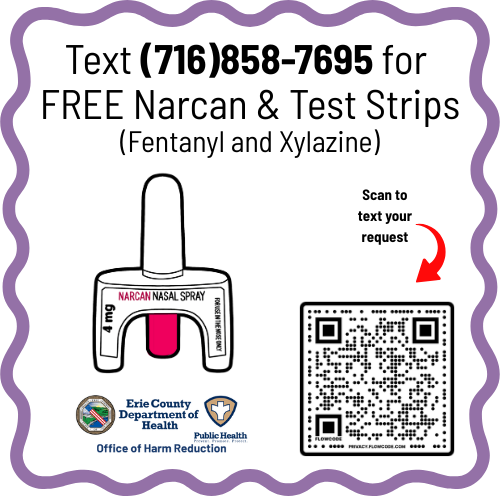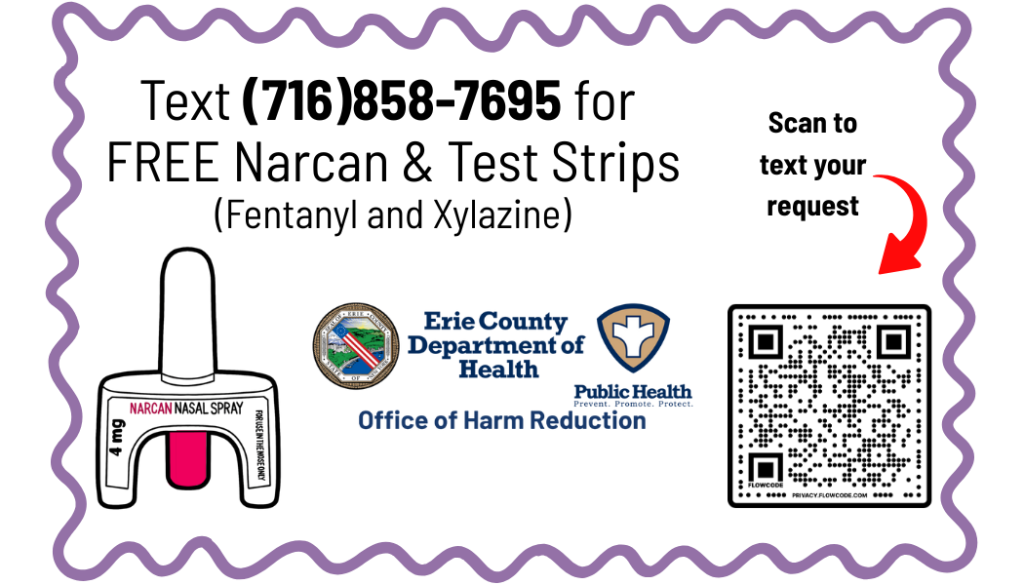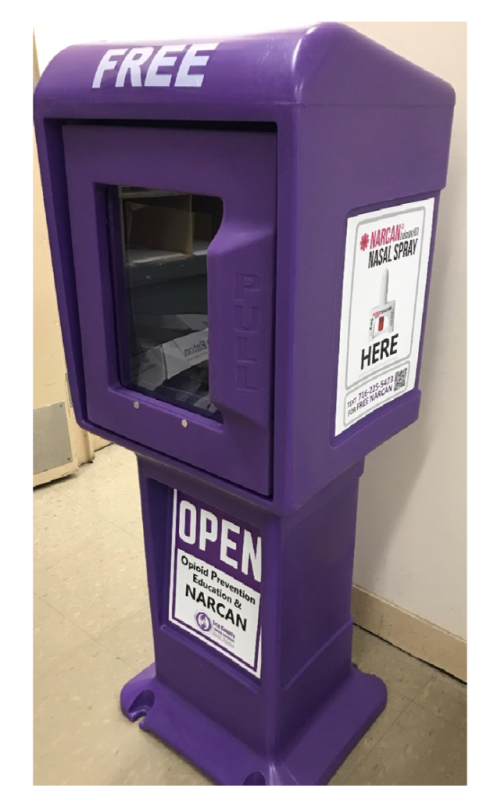
What is naloxone and is it the same as Narcan®?
Naloxone is the generic name for Narcan. When naloxone was first approved, its brand name was “Narcan.” There are now other brand names for naloxone.
Naloxone is a lifesaving, first-aid medication used to reverse an opioid overdose. It works by kicking the opioids off their receptors and blocking the effects of opioids in the body. Naloxone is a do no harm drug meaning it won’t have any impact on someone who does not have opioids in their system, because of this we encourage everyone to keep it with them at all times.
What is an opioid overdose?
Overdose occurs when a toxic amount of a substance overwhelms the body (that amount is different for everyone). Specifically for an opioid overdose breathing becomes slowed or stopped which can lead to unconsciousness and death. This process in the body can occur over minutes to hours after an opioid is used, because of this we recommend using substances with a trusted person or utilizing the Never Use Alone Prevention Line (877)696-1996.
Warning signs that an overdose is occurring:
- Pale blue or purple lips and fingernails
- Slowed or stopped breathing and heartbeat
- Gurgling sounds coming from the mouth
- Unresponsive to stimuli (can’t wake up)
In case of an overdose follow these steps:
- Call 911 and say, “I have a suspected overdose”. The NY State 911 Good Samaritan Law protects anyone calling 911 to save a life.
- Lay the person on their back.
- Tilt the person's head back to open the nasal passageways.
- Insert Narcan into the person's nose and press the plunger.
- If you are comfortable, provide rescue breathing while waiting for the first dose to work.
- If they are still unresponsive after 2-3 minutes, provide another dose of Narcan in the opposite nostril.
Where can I get free naloxone/Narcan, fentanyl test strips, xylazine test strips, and other harm reduction supplies?
The Erie County Department of Health (ECDOH) offers many ways to get naloxone and other harm reduction supplies for free.
Please note that the ECDOH can only send supplies to addresses in Western New York.

Online:
Call: 716-858-7695
Text: tel:716-858-7695
Email: harm.reduction@erie.gov
Please allow 1-2 weeks for above orders to be processed.
Visit:
- Harm Reduction OPEN (Overdose Prevention, Education, & Narcan) Stands - OPEN stands allow public access to free harm reduction supplies, including Narcan and fentanyl test strips.
- Narcan Community Access Sites

Other organizations that offer free harm reduction supplies
- NY State OASAS harm reduction supplies
- MATTERS harm reduction supplies
- MATTERS harm reduction vending machines
How and when to use Narcan
Related information
- Harm Reduction Trainings & Events
- Peer Navigation & Treatment Support
- Harm Reduction Resources
- Harm Reduction Data
- Cannabis
- Medication Disposal & Needle Access/Disposal
- Erie County Overdose Prevention Task Force
- Overdose Fatality Review (OFR) Program
- Harm Reduction Text Line Privacy Policy
- Harm Reduction Text Line Terms & Conditions